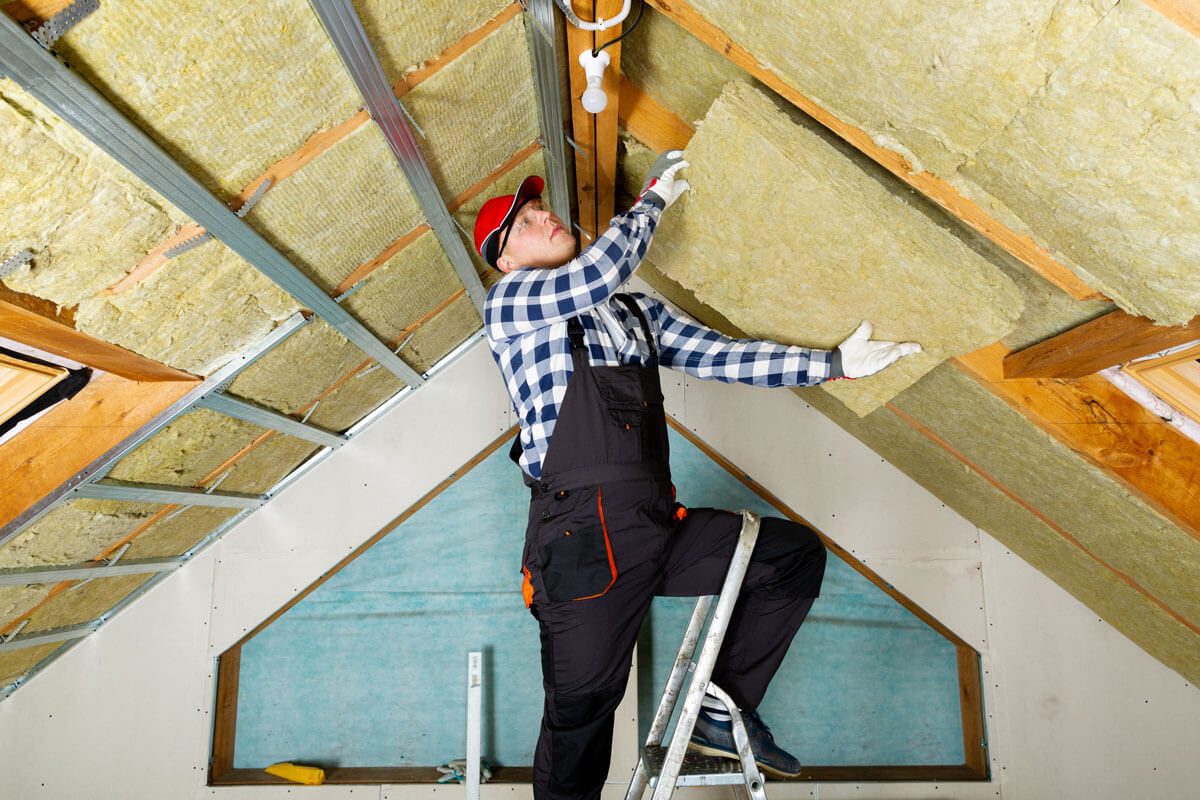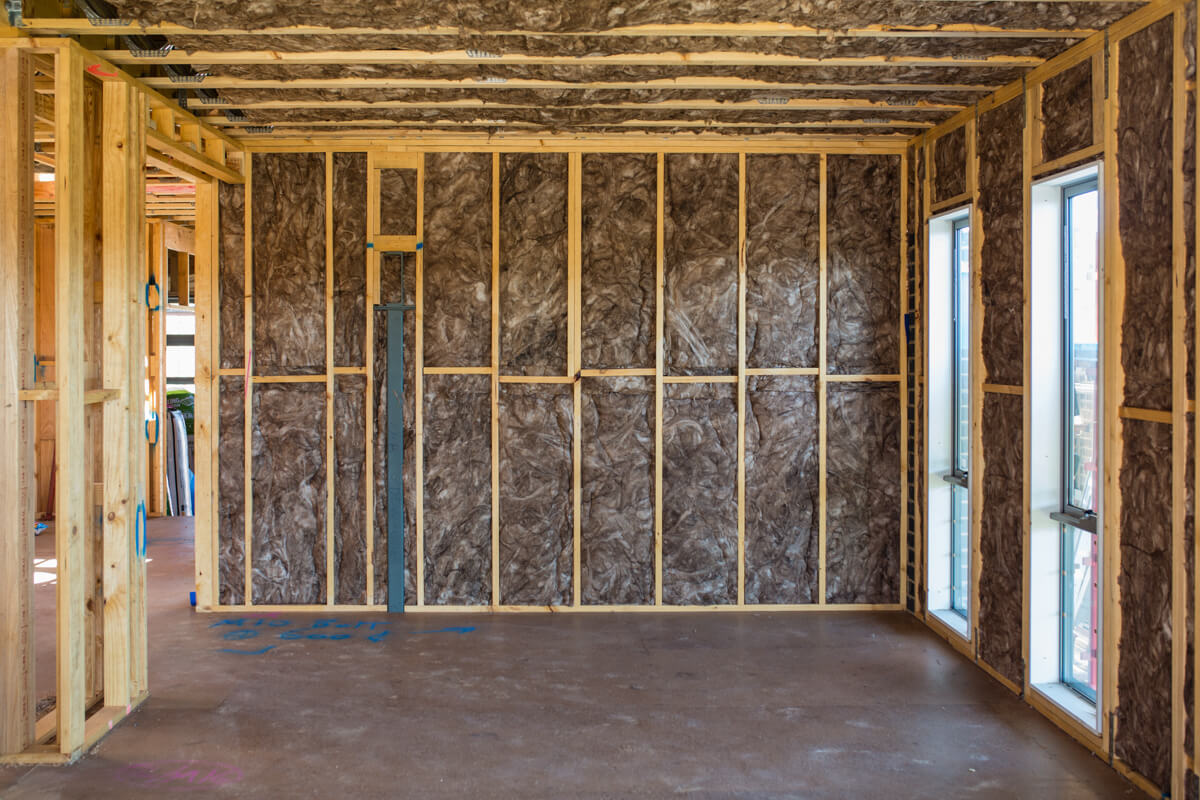Adding Insulation to an Existing Home Department of Energy
Table Of Content

This is one of the cheapest insulation types, and it’s a DIY-friendly product to install, since the materials are designed to fit into the standard width between wall studs, attic rafters, and floor joists. A properly insulated basement can save you money on heating and provide a dry, comfortable living space. In most cases, a basement with insulation installed on its exterior walls should be considered a conditioned space. Even in a house with an unconditioned basement, the basement is more connected to other living spaces than to the outside, which makes basement wall insulation preferable to ceiling insulation. In a new home, first see our information about insulating a new home, which will help you choose from among the many types of insulation on the market. If you’re in the design phase of planning your new home, consider structural insulated panels, insulating concrete forms, and insulated concrete blocks.

Types of Fire Extinguishers Every Homeowner Should Know
Community Building at Center for the Arts in Homer Receives $50K Grant For Roof Replacement and Insulation - X101 ... - X101 Always Classic Local News
Community Building at Center for the Arts in Homer Receives $50K Grant For Roof Replacement and Insulation - X101 ....
Posted: Fri, 26 Apr 2024 12:53:18 GMT [source]
For this reason, proper ventilation, personal protective equipment for eyes, hands, skin, and respiratory, and safe installation procedures are absolutely necessary. Rigid foam insulation and closed-cell spray foam insulation won’t be damaged by moisture and can even serve as a moisture barrier in some applications. When these materials get wet, they lose R-value, settle, and contribute to mold growth.
Insulating Concrete Forms (ICFs)
This is more expensive and usually requires a contractor, but it may be worth the cost—especially if you live in a very cold climate. If you replace the exterior siding on your home, consider adding insulation at the same time. Apply insulation to floors above unconditioned spaces, such as vented crawl spaces and unheated garages. The type of insulation you should choose depends on how you will use it and on your budget. While closed-cell foam has a greater R-value and provides stronger resistance against moisture and air leakage, the material is also much denser and is more expensive. Open-cell foam is lighter and less expensive but should not be used below ground level where it could absorb water.
Loose-fill fiberglass
In addition to reducing heating costs, a properly insulated foundation will keep below-grade rooms more comfortable and prevent moisture problems, insect infestation, and radon infiltration. In new construction, consider construction techniques that provide both foundation structure and insulation, such as insulating concrete forms and insulating concrete blocks. Properly insulating your cathedral ceilings will allow ceiling temperatures to remain closer to room temperatures, providing an even temperature distribution throughout the house. Cathedral ceilings must provide space between the roof deck and home’s ceiling for adequate insulation and ventilation. This can be achieved through the use of truss joists, scissor truss framing, or sufficiently large rafters.
Made from different materials, these fluffy, fibrous rolls of insulation work just like your favorite winter sweater-by creating tiny air pockets that make it hard for heat to escape. But to work effectively, batt insulation needs to stay dry and free of outside air penetration. Air-sealing prior to installing batt insulation will provide this protection, just like wearing a windbreaker over your sweater. R-value requirements vary based on the spot in your home in which the insulation is installed. When it comes to the best insulation for walls, the insulation material can also impact the R-values needed for good energy efficiency. Having your home well insulated is key to keeping the temperature comfortable and your energy bills low.
A home center or building supply outlet can help you estimate the size and quantity of insulation you need for a specific application. If you plan to install loose-fill insulation, blowing equipment is usually available for rental where the insulation is sold. To make the most of any insulation installation (in new construction or an existing house), make sure to include air sealing in your plan. “It will sit there like a sponge, leading to mold problems and rot,” says Tom. Vapor barriers—sheets of plastic or kraft paper—keep water vapor out of the wall cavity so the insulation stays dry. But if it does, the barrier should face inside in northern, heating climates and outside in humid southern climates.
Batts in the rafters
Some varieties are better suited for new construction or unfinished spaces, and others are easier to use by DIYers for remodeling projects. There also are different types of barriers that can be part of an insulation product or sold and installed separately to increase vapor and thermal transfer through a wall assembly. Depending on your location, installing spray foam insulation can add $3,000-$5,000 to the price of insulating an average-size house. Installation requires a highly trained crew, special safety gear, costly chemical compounds and expensive application equipment. Most of us know how good spray foam is at filling gaps and sealing open seams because we’ve used the pressurized cans of spray foam available at hardware stores and home centers. Insulation contractors also use this single-component spray foam to air-seal a house prior to insulating with fiberglass, cellulose or other fibrous insulation.
What is the cheapest way to insulate an old house?
A 2-inch-thick panel of foil-faced polyisocyanurate costs a little under $30. To meet fire rules, you must cover interior boards with drywall at least ½ inch thick. Polystyrene will break down if exposed to sunlight, so it can’t be left uncovered too long. Sarah is a freelance journalist and editor writing for websites, national newspapers, and magazines. She loves testing the latest home appliances, revealing the trends in furnishings and fittings for every room, and investigating the benefits, costs and practicalities of home improvement. It's no big surprise that she likes to put what she writes about into practice, and is a serial house revamper.
TopBuild Announces Mutual Termination of Agreement to Acquire Specialty Products and Insulation - TopBuild Corp.
TopBuild Announces Mutual Termination of Agreement to Acquire Specialty Products and Insulation.
Posted: Mon, 22 Apr 2024 20:19:37 GMT [source]
Cost to Insulate Basement
While standard insulation reduces heat flow in a home, reflective insulation instead reflects the heat away from the home to prevent heat gain and radiant heat transfer to cooler surfaces indoors. The material is constructed using a reflective barrier (like aluminum foil) placed over a substrate material (like kraft paper or polyethylene bubbles). Generally speaking, products suitable for concrete block insulation include spray-foam, loose-fill mineral wool, or polystyrene beads. These materials will travel to the bottom of the wall cavity and fill it up, reducing air and sound travel through the wall.
These will help the overall thermal efficiency of your home and may make you eligible for local or state rebates. With careful planning and preparation, it is entirely possible to install certain types of home insulation by yourself. However, some types of home insulation should only be installed by a professional.
You can save energy and reduce your carbon footprint by insulating your home. Get started with tips from an expert with years of building experience. Timothy Dale is a home repair expert and writer with over a decade of hands-on construction and home improvement experience. He is skilled in residential, commercial, industrial and institutional plumbing, electrical, carpentry, installation, renovations, and project management.
To be effective, the barrier’s reflective surface must always face an air space at least an inch thick and be installed shiny side up if laid on the attic floor, shiny side down if attached to the rafters. Tests show that a radiant barrier in an insulated attic can lower attic temperatures by as much as 30 degrees. While radiant barriers are a boon in warm climates, they’re less useful in cold-weather regions because they prevent beneficial solar heat gain in winter. Most common insulation materials work by slowing conductive heat flow and convective heat flow. Radiant barriers and reflective insulation systems work by reducing radiant heat gain. To be effective, the reflective surface must be in contact with an air space.
Comments
Post a Comment